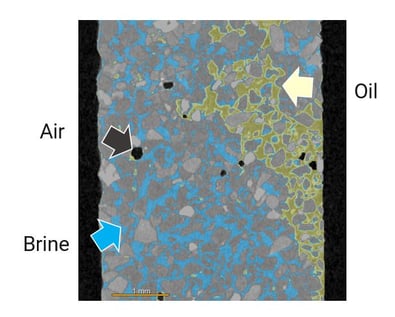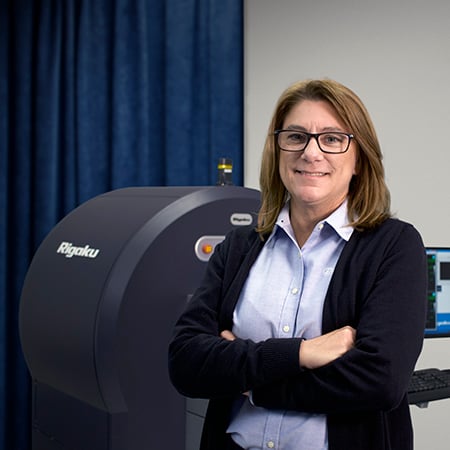Sand Oil and Brine Segmentation by X-ray CT
About the sample: Oil and brine between sand grains
The porosity, pore network, and permeability are important parameters that indicate how well or easily you can extract petroleum from sandstones. You can also fill the pore space with oil and replace it with water or brine to simulate the extraction process and analyze it using X-ray CT (computed tomography).
Analysis procedure
- In this example, oil and brine were added to packed sand grains and the entire sample was scanned using a micro-CT scanner, CT Lab HX.
- The three phases plus air were segmented by the deep learning segmentation technique.
1. CT scan
Sand grains were packed in a 4 mm diameter plastic cylinder. Oil was poured into the pore space followed by brine (iodine-stained water). The entire sample was scanned to produce the 3D grayscale CT image. The gray level in CT data represents the relative density.

2. Image segmentation
The gray levels of oil, brine, and sand grains are very close and difficult to segment by any conventional technique such as thresholding. However, by training a deep learning network, all three phases and air bubbles can be segmented as shown in this example.
Note that the brine density (iodine concentration) needs to be adjusted to secure sufficient contrast among different phases. The best density depends on the density of sand grains and oil used in the experiment. You can start with a high concentration and run a test scan. You can dilute the brine until a good contrast is achieved.

Contact Us
Whether you're interested in getting a quote, want a demo, need technical support, or simply have a question, we're here to help.
